Images taken with Lunt LS60 or Lunt LS100 in single stack or double stack mode as indicated near the image.
Recording with ASI174. Typically 10% to 20% of 750 / 1000 / 2000 frames stacked in AutoStakkert!2 processed in Registax 6 and Photoshop CS2.
Time-lapse videos with Python script and ffmpeg.
2017-11-29 17:30UT I wanted to try another time-lapse to test the batch wavelet processing script that I finally was able to put together using the 'AutoIt:' tool. The target was a region of filaments and prominences at the limb of the Sun. It was immediately obvious that seeing was not good at all so this is more an experiment than a true result worth presenting by its own. In total 71 AVIs were collected. 10sec each at about 100frames per sec, yielding 1000frames. AutoStakkert!2 was used to batch analyze and stack the videos. Then the AutoIt: script did the wavelet sharpening in Registax 6. The time-lapse was then composed using ffmpeg. The final animation does show a pretty static Sun. There was no dynamic movement in the prominences. So the improved workflow will hopefully show its full [potential next time.
2017-10-21 18:08UT There were some active regions and prominences on the Sun today. The seeing was OK to use the 100mm Lunt scope and later add the 2x barlow.
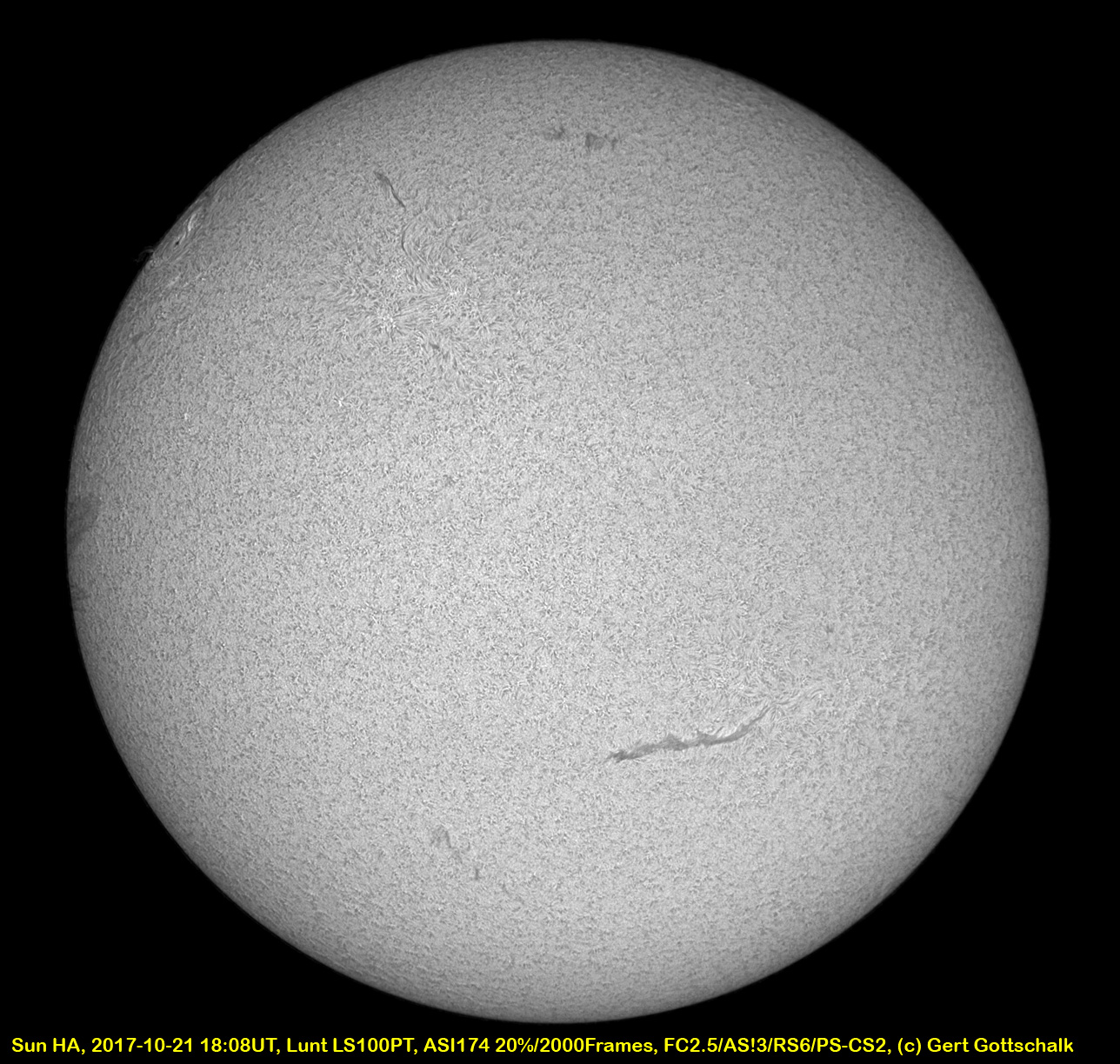
2017-10-21 18:20UT Using the 2x barlow and cropped image this is a closeup of the active region near the solar limb. There is a prominence emanating from the active region reaching into space.
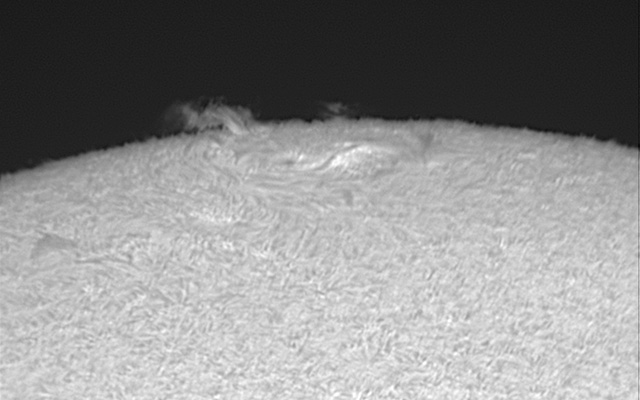
2017-10-21 18:23UT This prominence arches from over the disk into space.
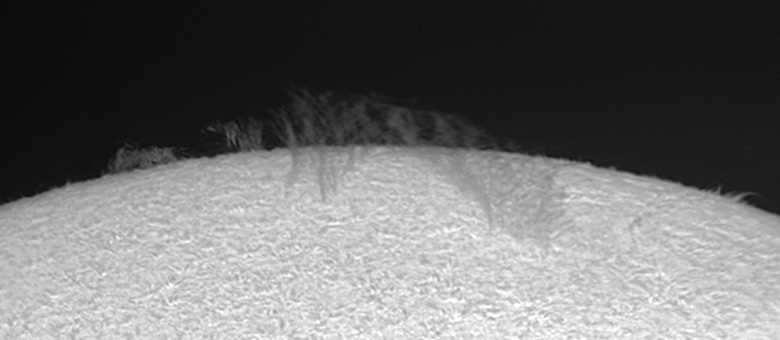
2016-10-06 20:08UT to 21:14UT. 121 AVIs were captured at 1min intervall to create a prominence animation.
2017-09-23 18:34UT There was not too much activity on this weekend. Clearly we are in the solar minimum. This isa composite of an exposure for surface and one for prominences.
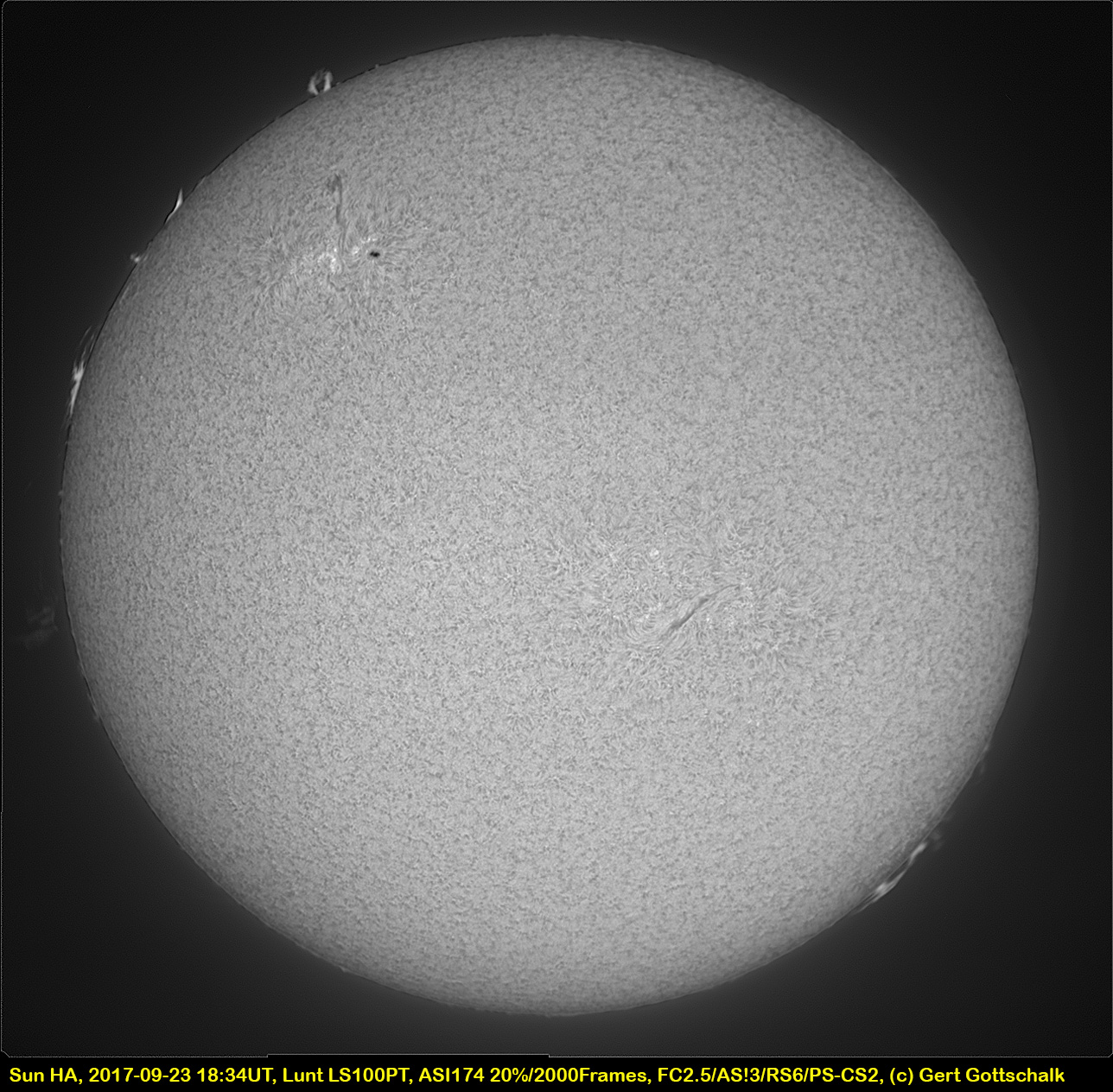
2017-08-21 17:22:50UT The great solar eclipse of 2017. I will have a dedictaed eclipse photo page, soon.
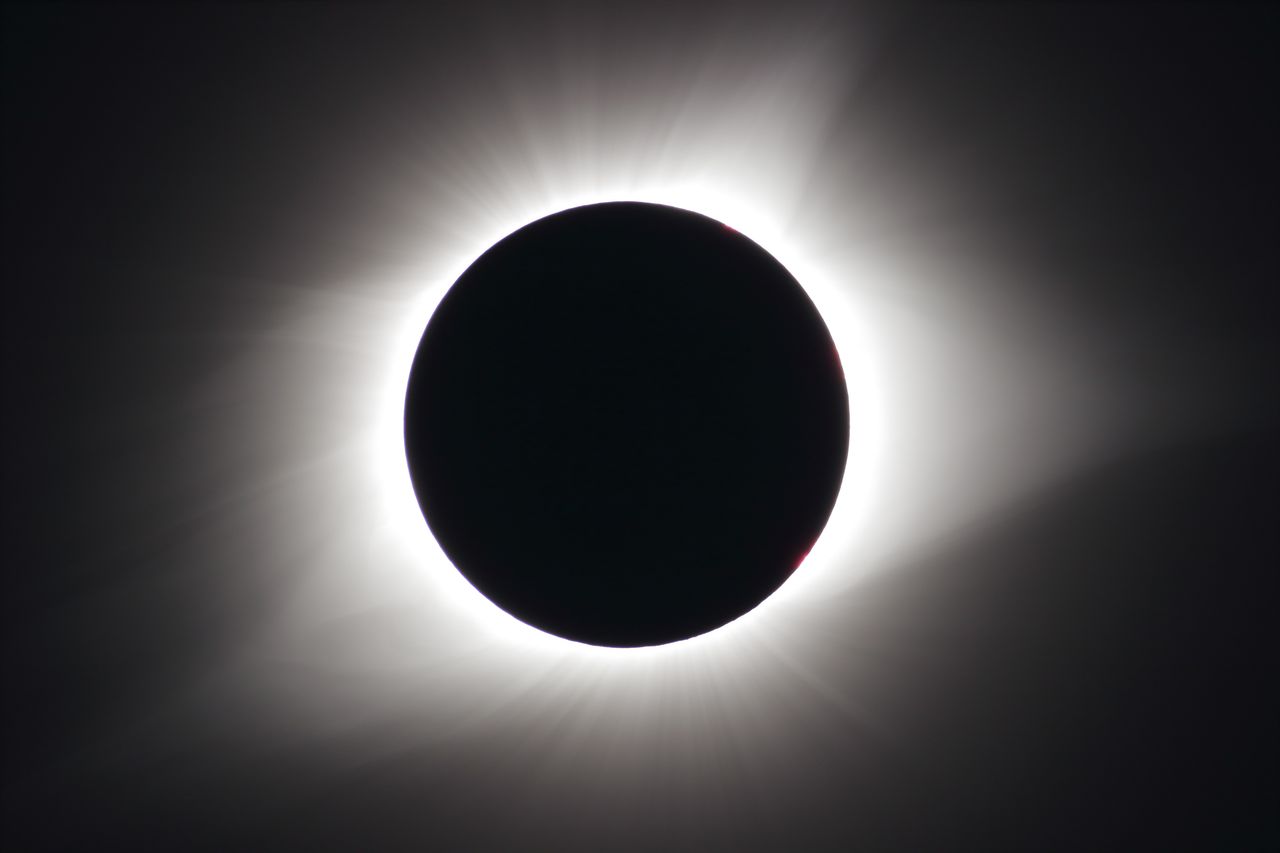
2017-07-09 19:15UT. In the process of testing my mount for the solar eclipse in August I did a few recordings of the full solar disk and later some detail (surface and prominences). This composite is from exposure time adjusted for surface and prominences.

2017-07-09 19:22UT A nice surface detail around the sun spot with the 3x Barlow lens.
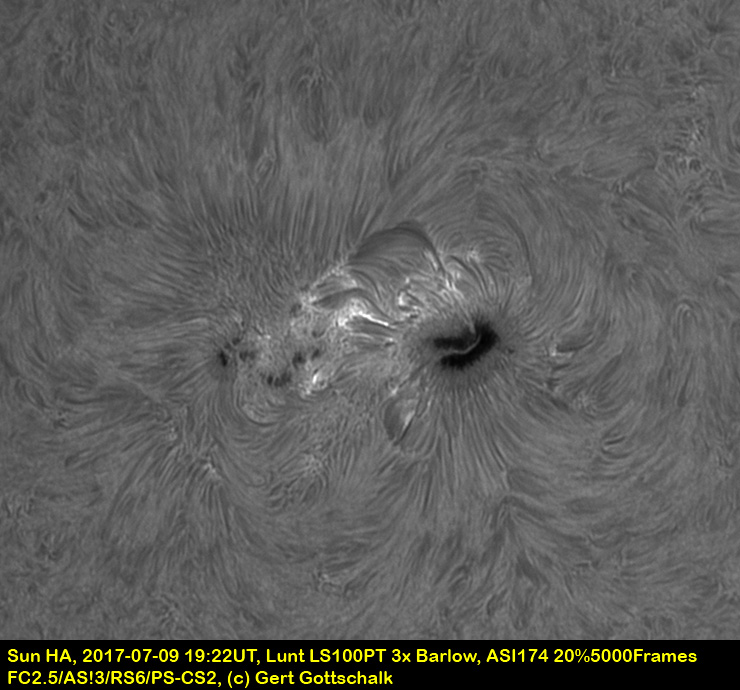
2017-07-09 19:33UT. The main attraction of the day surely was this big prominence.
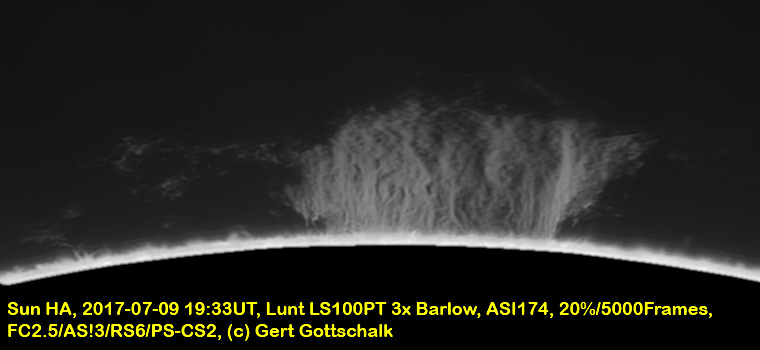
2017-07-09 19:26UT and 19:29UT. Two smaller prominences.
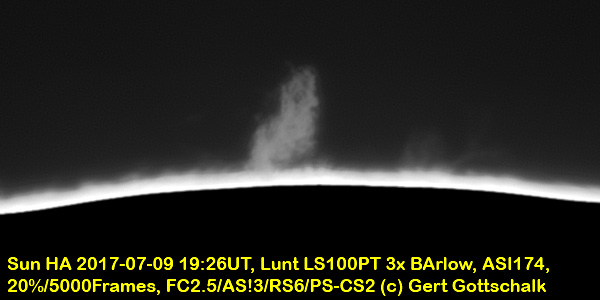
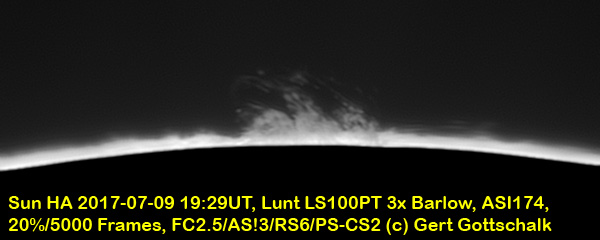
2017-07-04 19:34UT Not so much fireworks on the Sun today. We are not seeing a lot of activity due to the proximity of the solar minimum. So there were no fireworks on the Sun today for the 4th July holiday. Here is a full disk image from the ASI174 and the Lunt LS100PT in single stack mode.
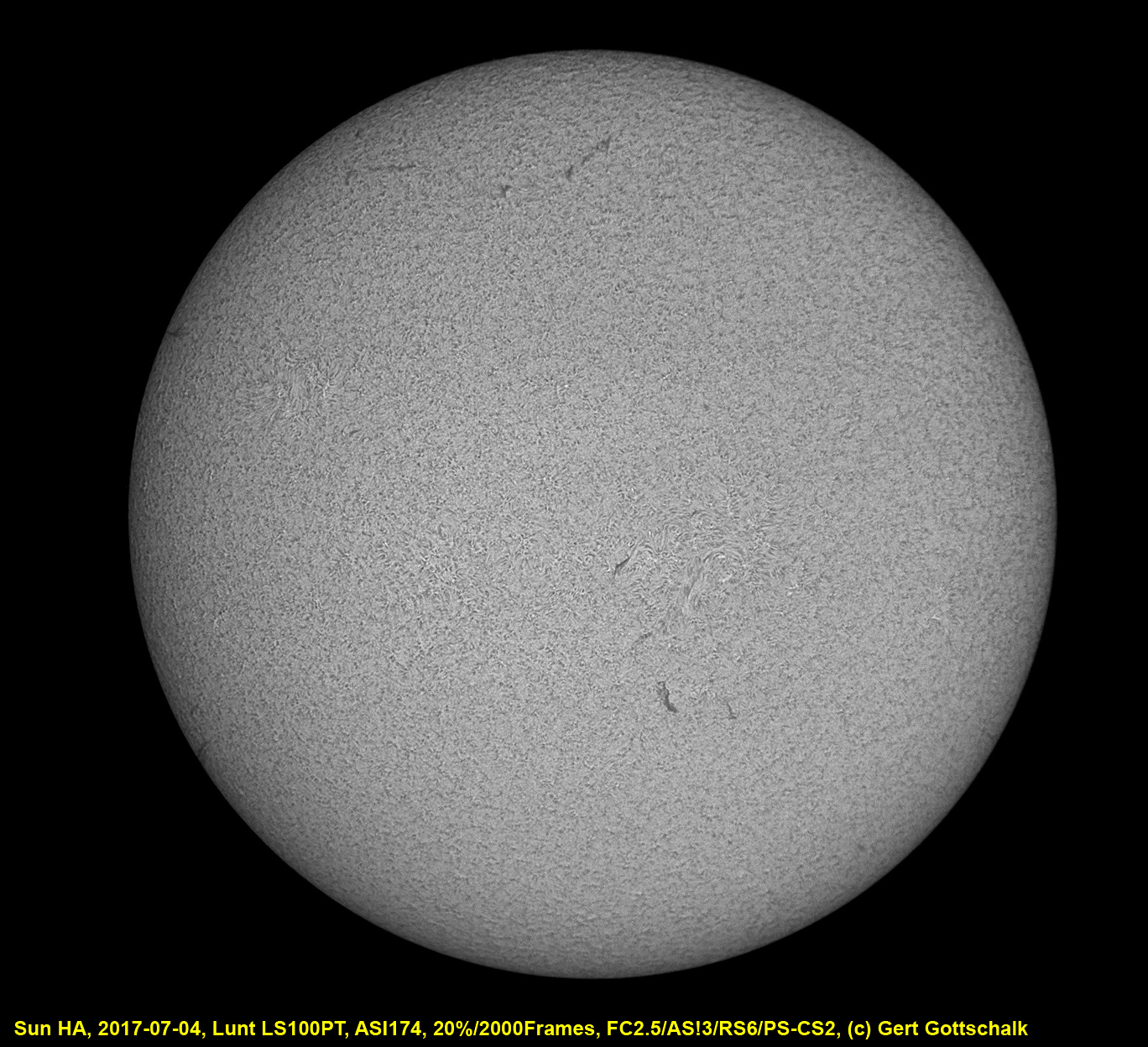
2017-07-04 19:44UT The seeing was not good so reasults with the 3x Barlow were not encouraging. I tried a few prominence details anyway.
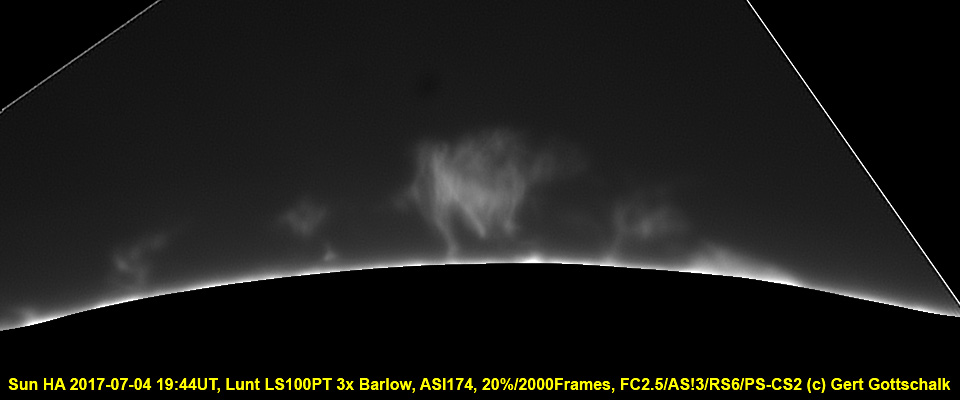
2017-07-04 19:46UT Another small prominence.
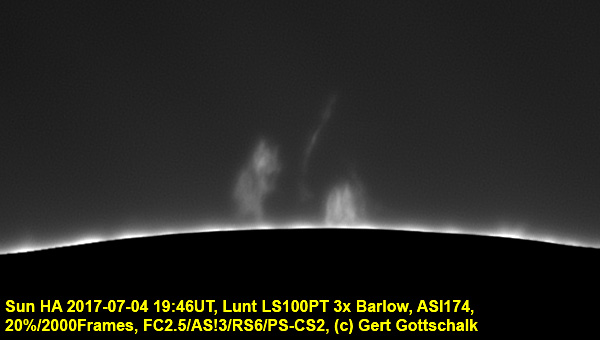
2017-07-04 19:49UT Some surface detail with the 3x Barlow.
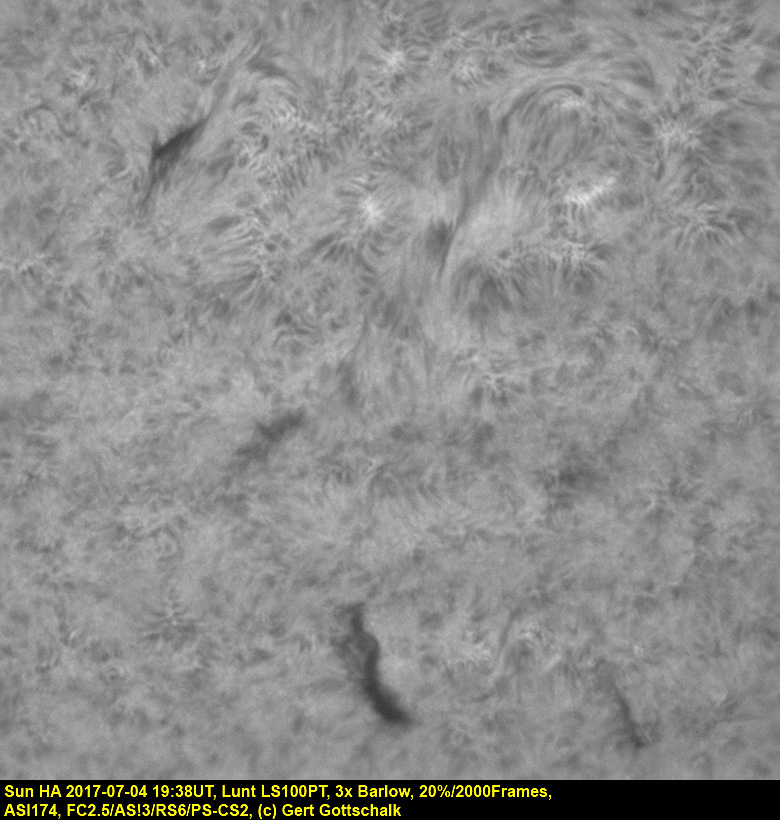
2017-04-01 18:33UT A nice solar activity in a time of the solar minimum. We see two big activity regions on the Sun with complex sunspot structures. The image shown is a composite of one exposure for th surface and one for the prominences.
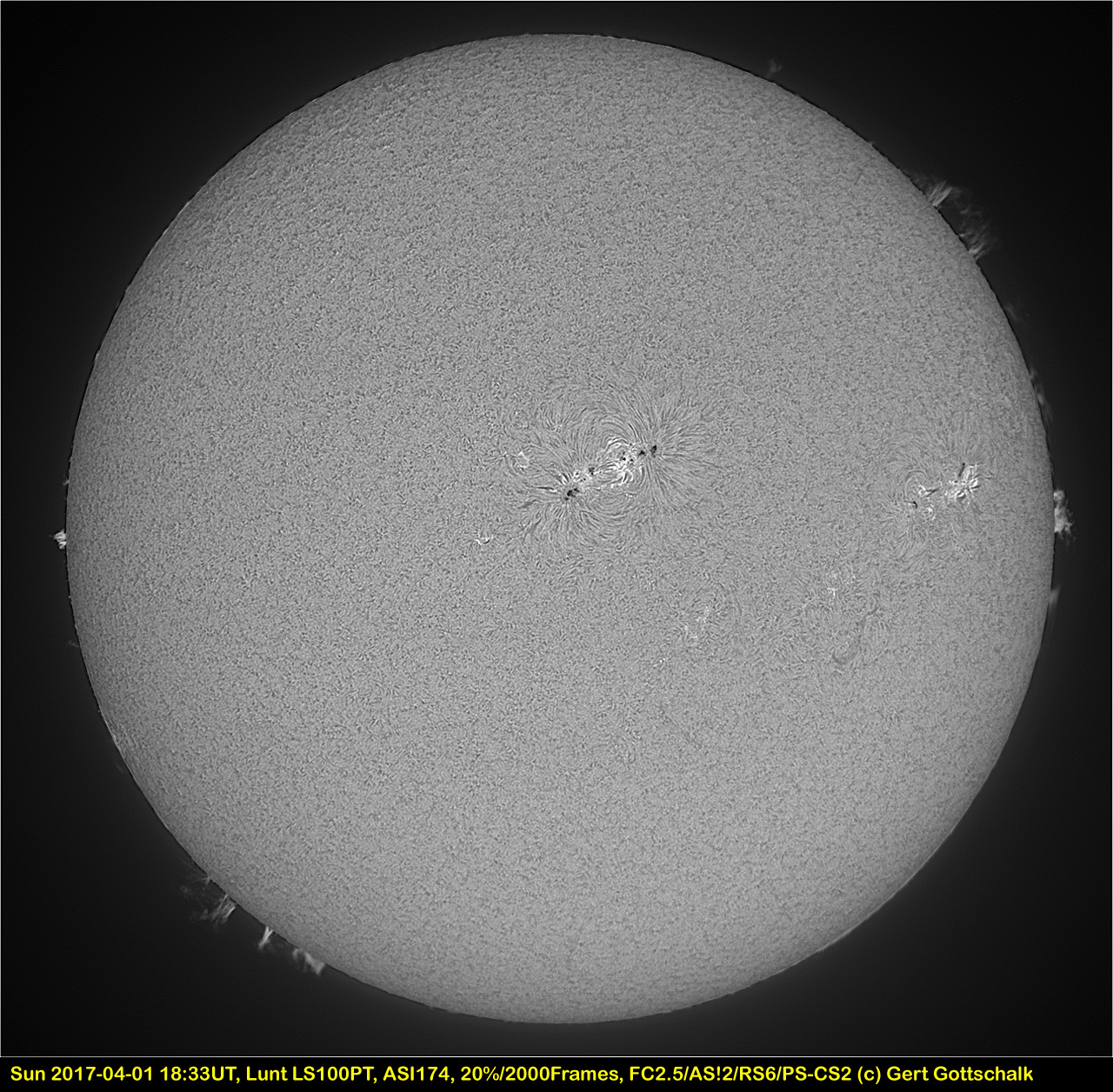
2017-04-01 18:49UT With a 3x Barlow lens we are looking at detail in the prominence at upper right.

2017-04-01 18:55UT And another prominence detail at lower left.
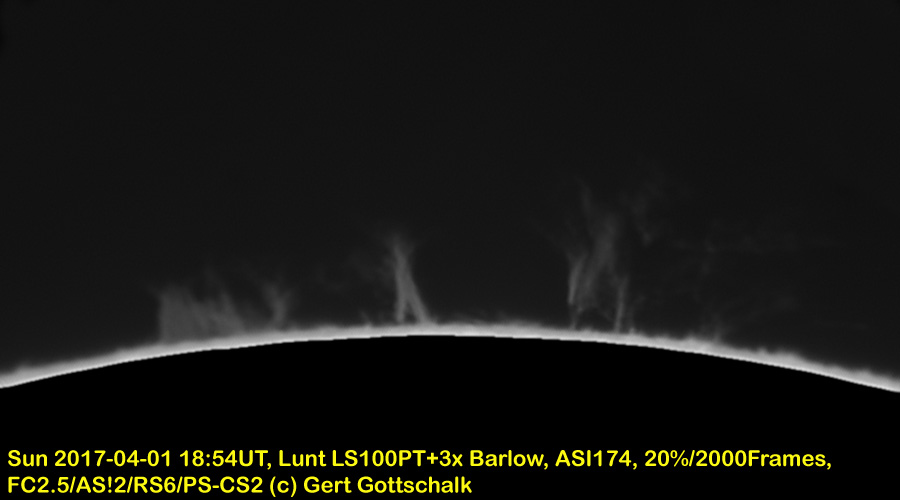
2017-04-01 19:16UT And detail of the active sunspot. I recorded a number of AVIs of this spot with the idea to make a timelapse video. But the seeing was too variable to make a smooth video, so I only picked this one frame which has the best seeing.
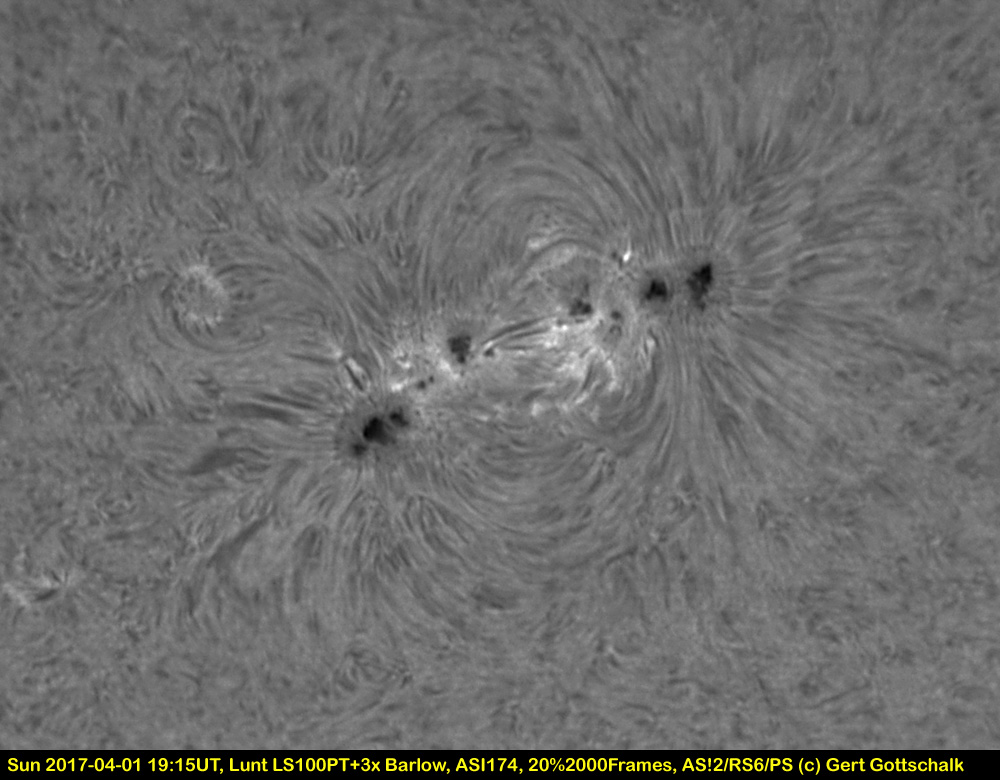
2017-02-25 19:00UT Some preparation and tests starting for the 2017 solar eclipse. Here I test the image scale and detail of the FS102 Tak and 400mm zoom Canon lens. The inset shows the sunspot at 100% image scale.
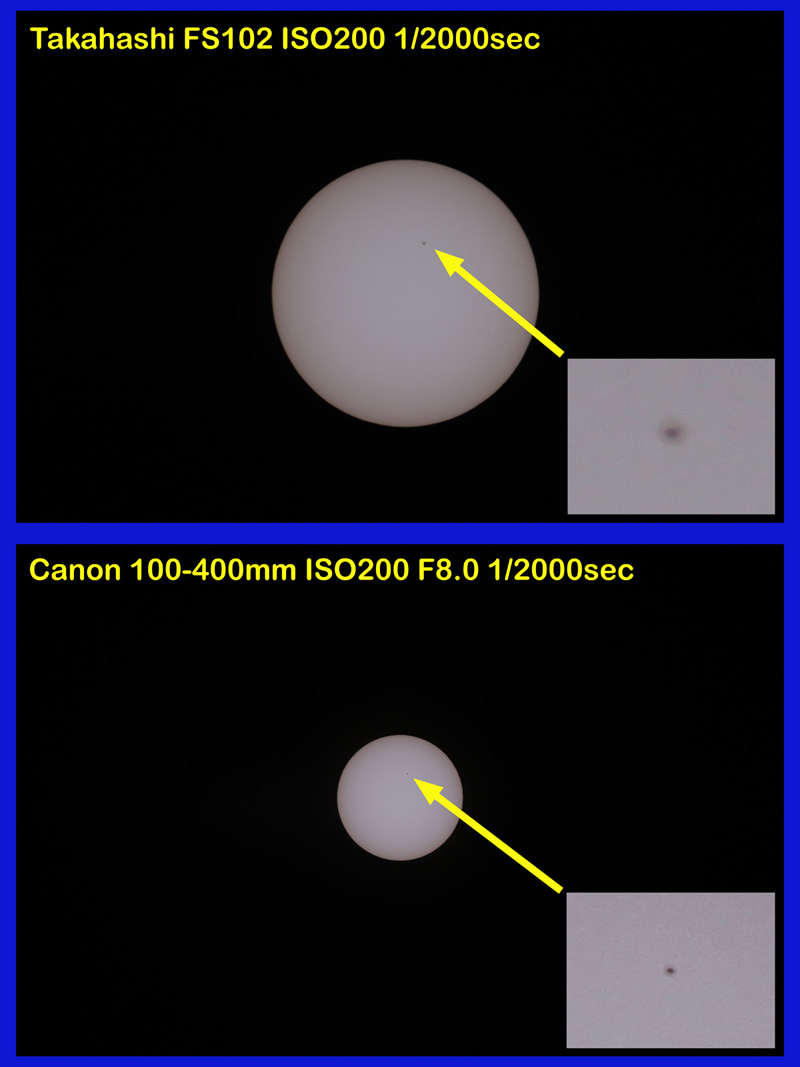
2017-02-12 19:12UT. After a long rainy seasin we got a weekend with some clear patches between cirrus clouds. This time the Lunt LS100PT as single stack filter was used. There is not much activity these days. I also checked a recording exposed for prominences, but there was not enough detail to use it for a merged composite.
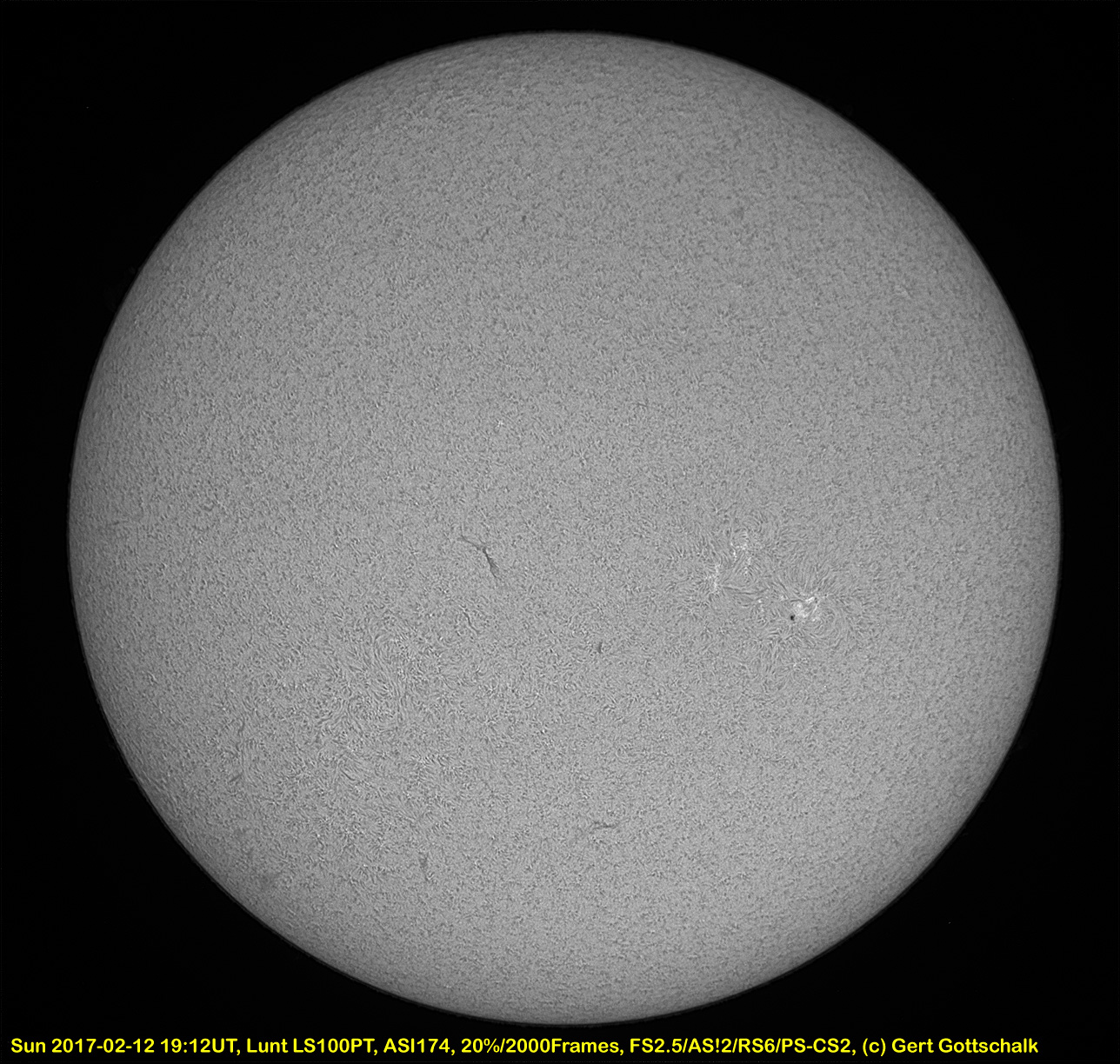
2017-01-14 19:56UT. Happy new Year! The first solar observation this year. We are starting with the Lunt LS60 and the ASI174. For the new year the laptop received an SSD upgrade and an ExpressCard USB3.0 adapter. This is a great improvement over USB2.0. At full frame size of 1936x1216 the frame rate is 66fps. That's about 4x better than the prev. configuration of USB2.0 and disk drive. The image below is a cropped frame size of 1280x960 which achieves 126fps. The 2000 frames are captured in 16sec.
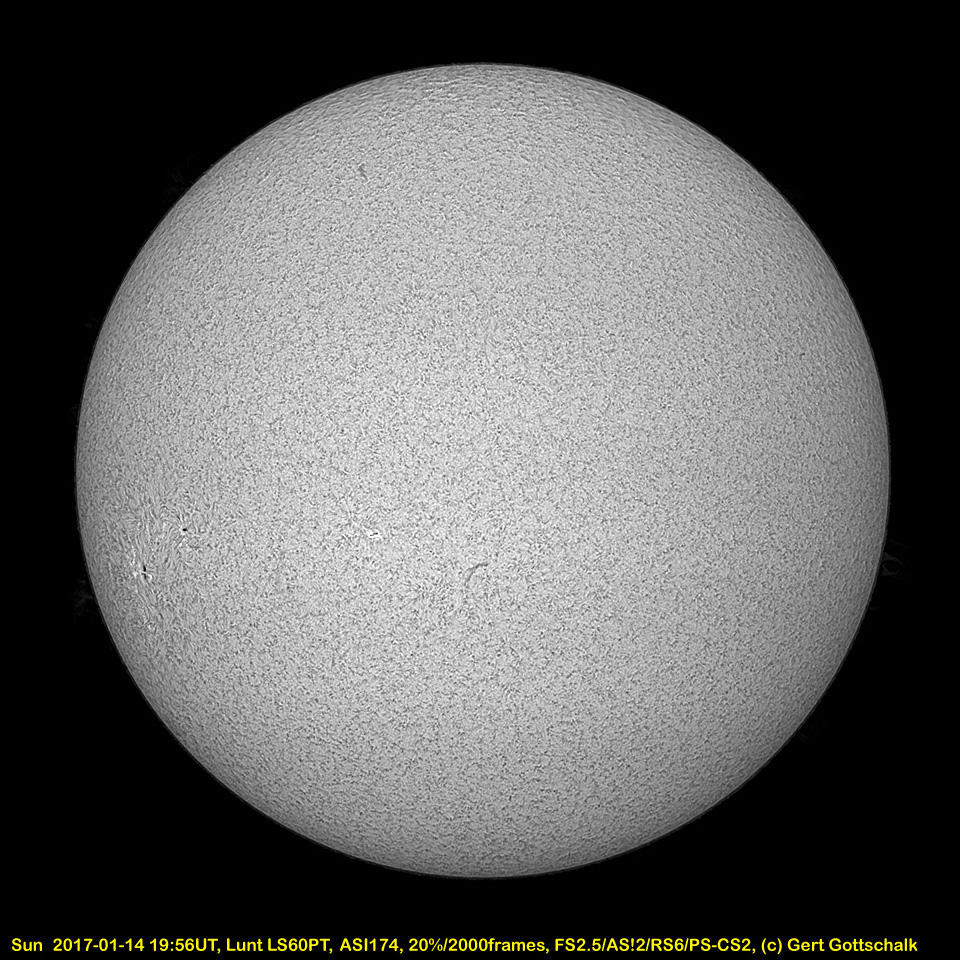
2017-01-14 20:02UT. Adding the DS unit to the Lunt. There is not much improvement on the surface as there is really low activity these days. But some prominences are coming out.
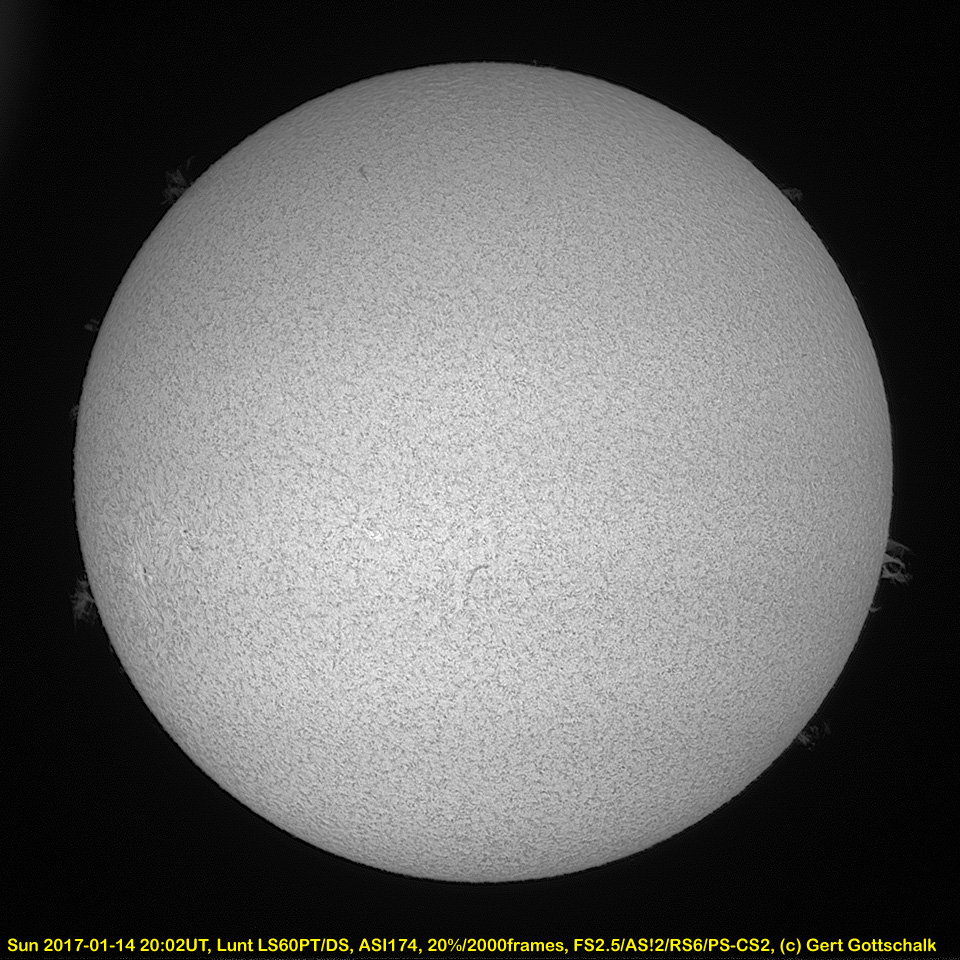
Copyright images and processing Gert Gottschalk.
Copyright Bilder und Verarbeitung Gert Gottschalk